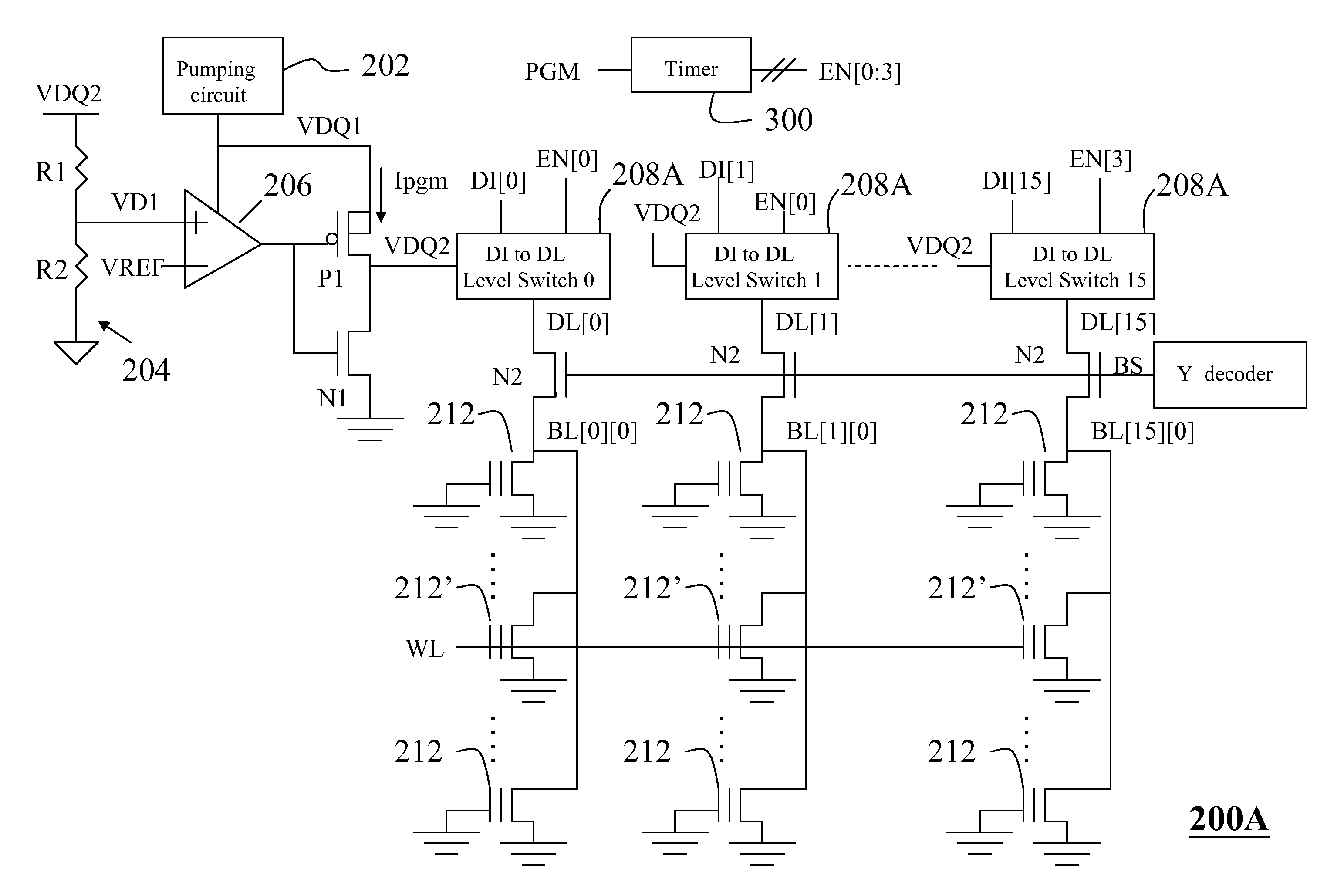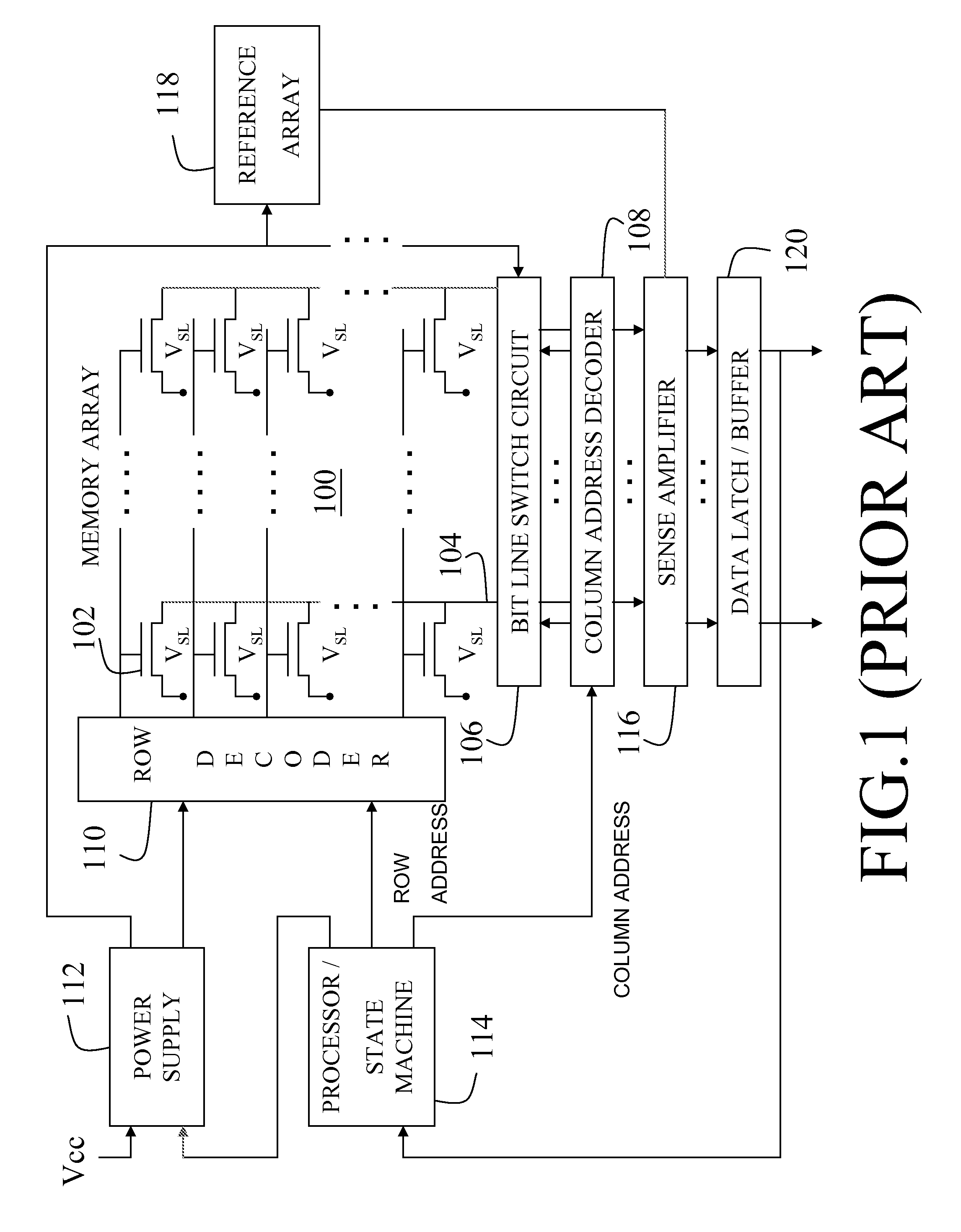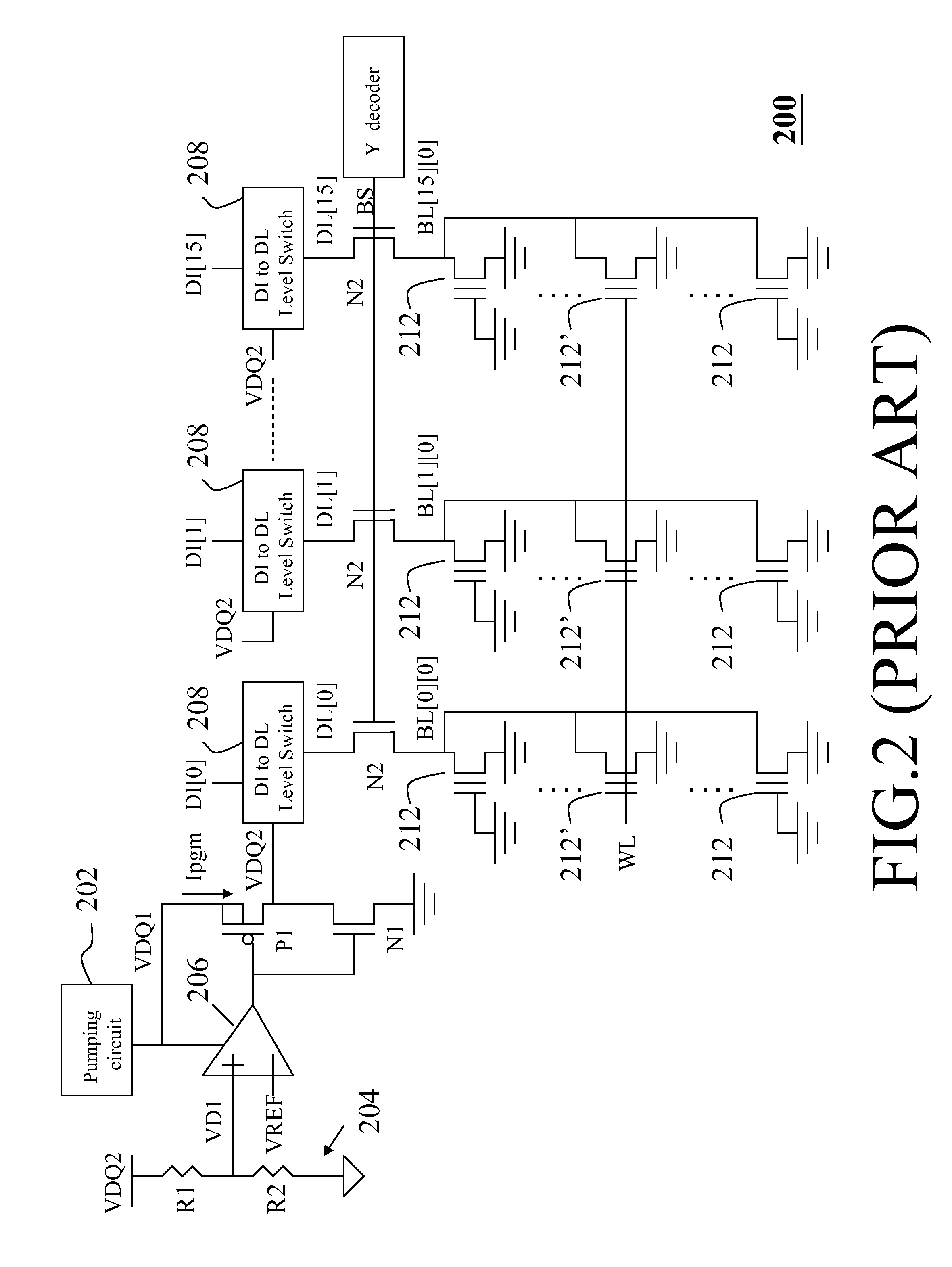Flash memory with sequential programming
a flash memory and sequential programming technology, applied in the field of flash memory devices, can solve the problems of power noise, program current may create power noise, and the upper limit of the power supply output current of the tester unit for testing memory devices
- Summary
- Abstract
- Description
- Claims
- Application Information
AI Technical Summary
Benefits of technology
Problems solved by technology
Method used
Image
Examples
Embodiment Construction
[0022]FIG. 2 is a circuit diagram of a prior art programming circuit 200 for programming memory cells of a semiconductor memory device, such as the flash memory device of FIG. 1 including an array of NOR memory cells, hereinafter sometimes referred to as a “flash memory device.” Those features of the flash memory device not described herein are known to those of ordinary skill in the art and need not be repeated herein. Commonly assigned U.S. Pat. No. 7,009,882 provides a detailed discussion of the flash memory device structure, the entirety of which is hereby incorporated by reference herein.
[0023]The programming device 200 includes a power supply, such as charge pump circuit 202, that provides voltage value VDQ1. Various structures for charge pump circuit 202 are known in the art. Generally, charge pumps use capacitors as energy storage elements and some form of switching device to control connection of voltages to the capacitor. The pump circuit may also include an output capacit...
PUM
 Login to View More
Login to View More Abstract
Description
Claims
Application Information
 Login to View More
Login to View More - R&D
- Intellectual Property
- Life Sciences
- Materials
- Tech Scout
- Unparalleled Data Quality
- Higher Quality Content
- 60% Fewer Hallucinations
Browse by: Latest US Patents, China's latest patents, Technical Efficacy Thesaurus, Application Domain, Technology Topic, Popular Technical Reports.
© 2025 PatSnap. All rights reserved.Legal|Privacy policy|Modern Slavery Act Transparency Statement|Sitemap|About US| Contact US: help@patsnap.com



